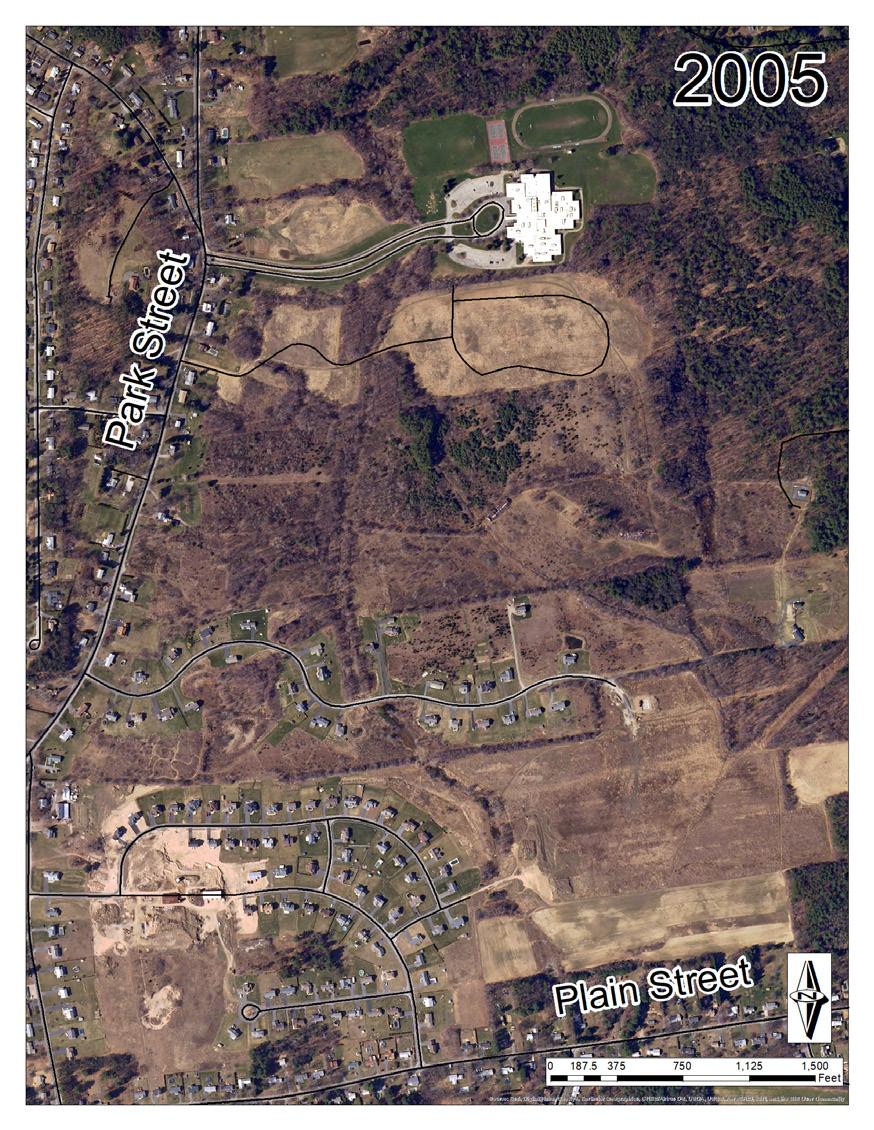
2 minute read
HISTORICAL CONTEXT
Land Use History


The White Brook area has likely been cleared of native forest for Europeanstyle agricultural production for most of the last two centuries. Prior to its settlement by white Europeans, the Connecticut River Valley was home to the Pocumtuck people. There were an estimated 1,200 to 1,600 Pocumtucks living in the Connecticut River Valley at the beginning of the seventeenth century, but their population rapidly declined as people died from introduced epidemics and were dispersed by conflicts with the colonists. The Norwottucks, a local group affiliated with the Pocumtucks, likely fished and practiced light agriculture on the fertile lands around the Manhan River.
The land between the Plains and Nonotuck Park was cleared of forest for European-style agriculture by the mid-nineteenth century when the mill industries were built in Easthampton and the city’s population continued to grow. This area remained largely clear of forests throughout most of the twentieth century. Aerial photographs from 1942 through 2018 show the amount of land in agriculture production declining dramatically beginning around 1990 as some areas are built into low-density residential areas while others grew into early successional forests.
The land use patterns in the White Brook area impact the character and environment of Easthampton. As agricultural use has declined, open fields have been replaced with residential developments or have regrown into young forests. Pavement and other impervious surfaces constructed for new development in this area contribute to rising urban temperatures and diminish the land’s capacity to absorb storm waters. Forests and unused agriculture fields sequester atmospheric carbon, absorb storm water, and provide wildlife habitat. Conserving natural areas from development will help mitigate rising temperatures and flooding in Easthampton in decades to come. While construction of a shared-use path would increase development and poses a disturbance to these natural areas, it would also allow for public access and foster greater appreciation and value for this beautiful landscape.



Timeline Pre-1600: Connecticut River Valley inhabited by the Pocomtuck people. A group known as the Norwottucks live on the shores of the Oxbow in present-day Easthampton. 1664: First white settler builds a home in Easthampton. 1847: Samuel Williston builds the button factory which still stands in Easthampton. Broad Brook is dammed to power the mills, creating Nashawannuck Pond, Rubber Thread Pond, and Lower Mill Pond. Circa 1850-1974: White Brook Area remains clear for agriculture. 1975: White Brook Middle School built. 1990: Development of Kingsberry Way. Early successional forests begin to grow. 2001: Development of Holly Circle. 2006: Development of Button Drive. 2019: Five acres cleared for the Park Street Solar Array. 2022: Construction of the White Brook K-8 School to be completed.










